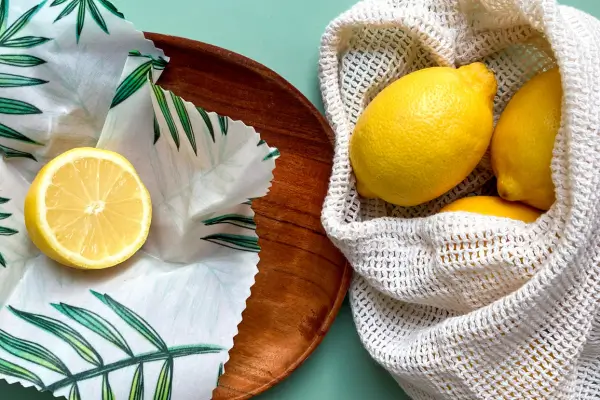Making eco-friendly candles at home is more than just a relaxing hobby. It’s a sustainable lifestyle choice that reduces exposure to harmful chemicals and plastic waste.
These candles use natural waxes like soy, beeswax, or coconut oil. They burn cleaner and longer than paraffin-based alternatives.
This guide dives deep into the process of making high-quality homemade candles. You’ll learn about wax types, wick selection, fragrance blending, and how to avoid common mistakes.
Let’s begin crafting with purpose and care.
Why Choose Natural Ingredients?
Commercial candles often contain paraffin wax, synthetic fragrances, and lead-core wicks. These can release toxins such as benzene and toluene when burned.
Natural candles eliminate these concerns by using:
- Plant-based or animal-derived waxes
- Cotton or wood wicks
- Pure essential oils for scent
- Natural colorants and botanical decorations
They also support a zero-waste mindset. You can reuse jars, create candle remnants, and choose biodegradable packaging.
Homemade candles are customizable, healthier, and better for the environment.
Choosing the Right Wax Type
Not all natural waxes behave the same way. Each has unique properties that affect burn time, scent throw, and texture.
Beeswax
- Natural golden color that can be bleached or left raw
- Burns slowly and emits a warm, honey-like scent
- Naturally smokeless and dripless when properly made
- Ideal for pillar candles or layered jar designs
Soy Wax
- Soft, creamy white wax derived from soybean oil
- Excellent for holding fragrance—ideal for aromatic candles
- Easy to melt and pour, with good adhesion to containers
- Biodegradable and vegan-friendly
Coconut Oil (and Other Carrier Oils)
- Can be used alone or blended with other waxes
- Has a low melting point and soft finish
- Adds moisture to the candle structure and improves scent diffusion
- Best combined with harder waxes to prevent melting in warm climates
Each wax has pros and cons. Choose based on your desired outcome and available materials.
Selecting the Best Candle Wicks
The right wick ensures even burning, minimal soot, and a long-lasting flame.
Common eco-friendly wick options include:
- Cotton wicks – Great for soy and beeswax candles; come in various thicknesses
- Wooden wicks – Add a crackling sound and rustic look; ideal for soy blends
- Hemp wicks – Burn slower and cooler; perfect for decorative candles
Wick size matters. Too thin and the candle won’t burn fully across the top. Too thick and it may smoke or flare up.
You can buy pre-tabbed wicks or cut your own and attach them using wick stickers or hot glue.
Tools and Materials Needed
Gather these supplies before starting your candle-making session:
- Natural wax (soy, beeswax, or coconut oil)
- Eco-friendly wicks (cotton or wooden)
- Heat-safe container (glass jar, tin, or ceramic cup)
- Double boiler or heatproof bowl over a pot
- Thermometer (to monitor wax temperature)
- Stirring utensil (wooden spoon or silicone spatula)
- Essential oils for fragrance (optional)
- Dried flowers, herbs, or spices for decoration
- Reusable silicone molds (if shaping candles)
- Wick centering device or chopsticks
Using what you already have helps reduce costs and environmental impact.
Step-by-Step Guide to Making Natural Candles
Follow these steps carefully to ensure a safe and successful candle-making experience.
Step 1: Prepare Your Workspace
Cover your work area with newspaper or reusable cloth.
Set out all tools and ingredients within reach.
Ensure good ventilation and keep flammable items away from the heat source.
Wear gloves and eye protection when handling melted wax.
Step 2: Measure and Melt the Wax
Weigh your wax chunks using a kitchen scale. A general rule is to use 1 oz of wax per 1 oz of container volume.
Melt wax slowly in a double boiler. Stir occasionally to ensure even heating.
Monitor the temperature with a thermometer:
- Soy wax: 170–180°F (77–82°C)
- Beeswax: 145–160°F (63–71°C)
- Coconut oil: melts around 76°F (24°C), but should be heated gently with other waxes
Avoid overheating, which can degrade the wax and affect performance.
Step 3: Add Fragrance and Color (Optional)
Once melted, remove from heat and let cool slightly.
Add 10–15 drops of pure essential oil per 100g of wax for subtle aroma.
Popular natural scent combinations:
- Lavender + Lemon – calming and fresh
- Eucalyptus + Peppermint – invigorating and clean
- Orange + Clove – warm and festive
- Cedarwood + Vanilla – earthy and comforting
For color, try natural powders like activated charcoal, turmeric, or beetroot powder.
Stir well to distribute evenly.
Step 4: Prepare the Container and Wick
Place the wick in the center of your container.
Use a wick sticker or dab of hot wax to secure it to the bottom.
Hold the wick upright using a centering device or chopsticks laid across the rim.
Trim the wick to about ½ inch before pouring.
Step 5: Pour the Wax
Carefully pour the melted wax into the prepared container.
Leave about half an inch at the top to allow for shrinkage as it cools.
Avoid moving the candle while it sets.
Let it sit undisturbed for 4–12 hours depending on the wax type.
Step 6: Let It Set and Cure
Allow the candle to harden completely at room temperature.
Soy candles benefit from a curing period of 2–3 days, which enhances scent throw.
Beeswax candles can be used immediately but become smoother after 24 hours.
Once set, trim the wick to ¼–½ cm for optimal burning.
Creative Ways to Customize
Personalizing your candles adds visual appeal and makes great handmade gifts.
Botanical Decorations
- Pressed lavender buds, rose petals, or chamomile flowers
- Thin slices of citrus peel or dried leaves
- Sprigs of thyme or rosemary for a rustic touch
Place them on top before the wax fully hardens.
Layered Effects
- Pour wax in layers with different colors or scents
- Let each layer cool slightly before adding the next
- Use contrasting essential oils for a multi-sensory experience
Embeds and Textures
- Small pieces of beeswax sheets or recycled candles
- Pinecones, seashells, or small stones for textured designs
- Carved wooden shapes or cork accents for modern looks
Tips for Long-Lasting Results
To get the most from your homemade candles:
Burn the candle for at least one hour during the first use to avoid tunneling.
Keep the wick trimmed to reduce smoke and soot.
Store candles in a cool, dry place away from direct sunlight.
Never leave a burning candle unattended.
Reuse glass jars or tins once the candle is finished.
Proper care extends burn time and enhances fragrance.
Final Thoughts
Making eco-friendly candles at home is a rewarding blend of creativity and sustainability.
By choosing natural ingredients and repurposing materials, you create healthier lighting solutions with less environmental impact.
Each candle tells a story through scent, shape, and style.
Whether for personal use or gifting, the warmth of a handmade candle is unmatched.
Start today—and light your world with intention.



